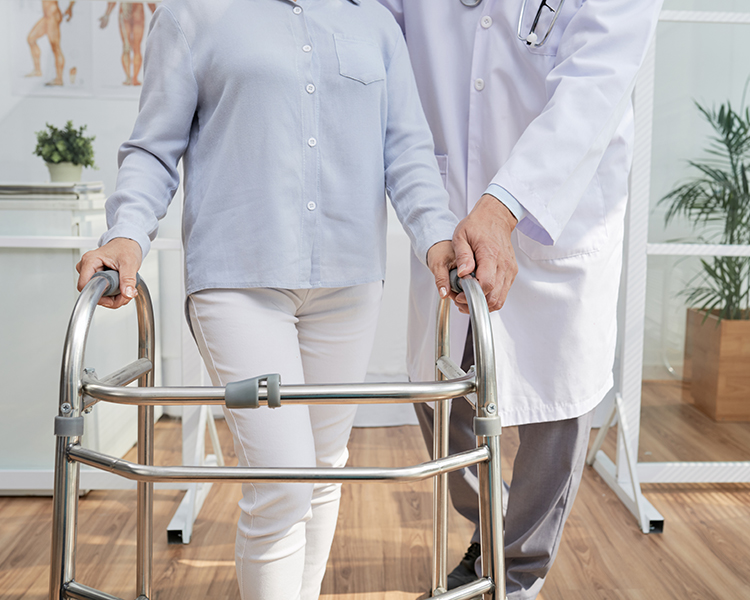AIモデルを用いたロコモティブシンドロームに
高齢患者の識別: 横断研究
人工知能(AI)モデルを用いて、高齢患者のロコモティブシンドローム(運動器症候群)を識別する方法を検討した横断研究です。具体的には、AIモデルの有効性を評価し、ロコモティブシンドロームの早期発見や予防に役立つ可能性を示しています。
Artificial intelligence model to identify elderly patients with locomotive syndrome: A cross-section study
概 要
高齢者におけるロコモティブシンドローム(運動器症候群)の特定は、身体機能の低下や障害を予防する上で重要です。既存のロコモティブシンドロームのスクリーニングツールは存在するが、これらは時間を要し、本人が質問票に独力で回答できるかどうかに制約があります。この課題を克服するために、足底の圧力分布情報を活用し、人工知能(AI)を用いた意思決定システムによってロコモティブシンドロームを特定するスクリーニングツールを開発した。本研究では、このAIシステムの概要を説明し、その性能を評価します。
Identifying elderly individuals with locomotive syndrome is important to prevent disability in this population. Although screening tools for locomotive syndrome are available, these require time commitment and are limited by an individual's ability to complete questionnaires independently. To improve on this limitation, we developed a screening tool that uses information on the distribution of pressure on the plantar surface of the foot with an artificial intelligence (AI)-based decision system to identify patients with locomotor syndrome. Herein, we describe our AI-based system and evaluate its performance.
研究方法
本研究は、平均年齢73.5歳の409名を対象とした横断研究です。歩行中の足底圧力分布を記録するためにフットスキャン圧力測定システムを使用しました。画像処理のステップでは、足圧画像に基づいてロコモティブシンドロームの確率を算出するための畳み込みニューラルネットワーク(CNN)を開発した。AIモデルのロジスティック回帰ステップでは、足圧画像のCNN出力に加え、年齢、性別、身長、体重などの予測因子の係数を推定しました。
This was a cross-sectional study of 409 participants (mean age, 73.5 years). A foot scan pressure system was used to record the planter pressure distribution during gait. In the image processing step, we developed a convolutional neural network (CNN) to return the logit of the probability of locomotive syndrome based on foot pressure images. In the logistic regression step of the AI model, we estimated the predictor coefficients, including age, sex, height, weight, and the output of the CNN, based on foot pressure images.
結 果
AIモデルは、従来の臨床データと比較して、高齢者におけるロコモティブシンドロームの特定精度を向上させました。AIモデルの曲線下面積(AUC)は0.84(95%信頼区間: 0.79–0.88)であり、従来の臨床モデルのAUC 0.80(95%信頼区間: 0.75–0.85)よりも高かった。さらに、足圧分布画像を含めることで、予測アルゴリズムが有意に改善されました。(ネット再分類改善 [NRI]: 0.675, 95%信頼区間: 0.45–0.90, P < 0.01;統合識別改善 [IDI]: 0.059, 95%信頼区間: 0.039–0.088, P < 0.01).
The AI model improved the identification of locomotive syndrome among elderly individuals compared to clinical data, with an area under curve of 0.84 (95% confidence interval, 0.79–0.88) for the AI model compared to 0.80 (95% confidence interval, 0.75–0.85) for the clinical model. Including the footprint force distribution image significantly improved the prediction algorithm (the net reclassification improvement was 0.675 [95% confidence interval, 0.45–0.90] P < 0.01; the integrated discrimination improvement was 0.059 [95% confidence interval, 0.039–0.088] P < 0.01)
結 論
歩行中の足底圧力分布を含むAIシステムは、ロコモティブシンドロームのスクリーニングに有効なツールであることが示されました。
The AI system, which includes force distribution over the plantar surface of the foot during gait, is an effective tool to screen for locomotive syndrome.
企業の取り組み
トヨタ自動車が開発した
リハビリテーション支援ロボット
トヨタ自動車株式会社が開発したリハビリテーション支援ロボット「ウェルウォークWW-2000」に、株式会社ネクストシステムのAI骨格検出エンジン「VisionPose」が活用されています。 ウェルウォークWW-2000は、脳卒中などで下肢麻痺を患った患者の歩行リハビリを支援するロボットです。このロボットには、患者の異常歩行をリアルタイムで判定する「歩行分析ガイド機能」や、リハビリを促進する「ゲーム機能」が搭載されています。これらの機能を実現するために、マーカーレスで高精度な骨格検出が可能な「VisionPose」が採用されました。 「VisionPose」の導入により、ロボットを装着した状態でも、患者の骨格情報をリアルタイムかつ高精度に検出することが可能となりました。これにより、臨床現場で実用的な歩行分析ガイド機能とゲーム機能の提供が実現されています。 このように、トヨタとネクストシステムの協業により、AI技術を活用した先進的なリハビリテーション支援が実現されています。
https://www.next-system.com/visionpose/use/medical
https://www.next-system.com/visionpose/recent-case/ww-2000


